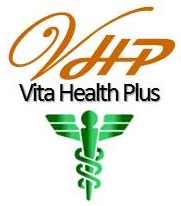About 1 in 3 adults in the U.S. has high blood pressure, but many don’t realize it. High blood pressure is sometimes called a “silent killer,” because it usually has no warning signs, yet it can lead to life-threatening conditions like heart attack or stroke. The good news is that high blood pressure, or hypertension, can often be prevented or treated. Early diagnosis and simple, healthy changes can keep high blood pressure from seriously damaging your health.
Normal blood flow delivers nutrients and oxygen to all parts of your body, including important organs like your heart, brain, and kidneys. When your heart beats it helps to push blood through your blood vessels, both large and small. Your blood vessels, in turn, constantly adjust. They become narrower or wider to maintain your blood pressure and keep blood flowing at a healthy rate.
It’s normal for your blood pressure to go up and down throughout each day. Blood pressure is affected by time of day, exercise, the foods you eat, stress, and other factors. So, its normal for your blood pressure to go up and down throughout each day, Problems can arise, though, if your blood pressure stays too high for too long.
High blood pressure can make your heart work too hard and lose strength. The high force of blood flow can damage your blood vessels, making them weak, stiff, or narrower. Over time, hypertension can harm several important organs, including your heart, kidneys, brain, and eyes, Damage to this organs raises the risk of having a heart attack, heart failure, stroke, or kidney disease.
Research has found that Hypertension is the leading risk factor for death and disability worldwide.
Anyone, even children, can develop high blood pressure. But the risk for hypertension rises with age. “Once people are in their 60s, about two-thirds of the population is affected by hypertension,
Excess weight or having a family history of high blood pressure also raises your risk for hypertension.
African Americans are especially likely to get hypertension. Compared to Caucasian or Hispanic American adults, African Americans tend to develop hypertension at a younger age and to have a higher blood pressure on average.
Hypertension usually has no symptoms, so the only way to know for sure that you have hypertension is to have a blood pressure test. The test involves placing an inflated cuff with a pressure gauge around your upper arm to squeeze the blood vessels. A health care provider may then use a stethoscope to listen to your pulse as air is released from the cuff, or an automatic device may measure the pressure.
Blood pressure is given as 2 numbers. The top number called systolic pressure represents the pressure in your blood vessels as the heart beats. The second number called diastolic is the pressure as your heart relaxes and fills with blood. Experts generally agree that the safest blood pressure—or “normal” blood pressure—is 120/80 or lower, meaning systolic blood pressure is 120 or less and diastolic pressure is 80 or less.
“Hypertension is defined as having an average blood pressure of above 140/90. Since blood pressure can vary widely from day to day, a diagnosis of hypertension is usually based on an average of 2 or more readings taken on 2 or more occasions.
If your blood pressure falls between “normal” and “hypertension,” it’s sometimes called prehypertension. People with prehypertension are more likely to end up with high blood pressure if they don’t take steps to prevent it.
High blood pressure can be prevented through diet, weight loss, and physical activity.
If you’re diagnosed with high blood pressure, your doctor will prescribe a treatment plan. You’ll likely be advised to make healthy lifestyle changes and may also need to take medications. The goal of treatment is to reduce your blood pressure enough to avoid more serious problems.
it’s important to work with your doctor on blood pressure goals. Most current guidelines recommend aiming for a systolic pressure below 140. These medical guidelines are sometimes adjusted as new research is reported.
“Results from research to date suggest that for older people with hypertension and an increased risk for cardiovascular disease, it may make sense to aim for a lower blood pressure. But there may be drawbacks as well, and each patient is different Discuss with your health care provider about blood pressure targets.
Studies have clearly shown that healthy lifestyle changes can improve your blood pressure. “In terms of diet, best advice is to follow the DASH eating plan
DASH stands for Dietary Approaches to Stop Hypertension.
The DASH eating plan requires no special foods. Instead, it provides daily and weekly nutritional goals. It’s high in vegetables, fruit, whole grains, and low-fat dairy foods but low in saturated fat and added sugar.
“DASH is beneficial even for people who have normal blood pressure or who have prehypertension. It can help keep blood pressure from progressing to higher levels.
Reference: NIH

